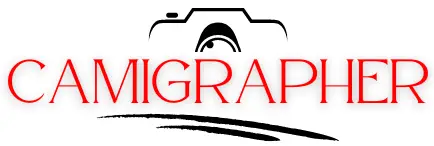The article discusses the different types of lenses available for skiing, and the best color lense for most ski conditions.
Contents
Ski and Snowboard Goggle Lens Tint Guide | SportRx
[ytvideo]
The Best Colors for Ski Conditions
There are a few things to consider when choosing the right ski lens.
The color of the lens has a major impact on how well you will see in different ski conditions.
Warm colors like yellow and orange help you to see clearly in strong sunlight while cool colors like blue and green help you to see in low light.
The lens should also be designed for your skiing conditions. If you ski in deep snow, you will need a lens with a lot of glare protection. If you ski in powder, you will need a lens that is resistant to scratch and smudge.
The final consideration is the cost of the lens. Lenses range in price from around $30 to $200. The more features the lens has, the more expensive it will be.
How to Choose the Right Lens Color
When choosing lenses for skiing, it is important to take into account the prevailing ski conditions. The best lens color for skiing in most conditions is a light green.
The reason for this is that green light is the least disruptive to other colors of light. In other words, it helps to create a natural looking image. This is especially important when skiing in conditions with a lot of snow and bright sunlight.
Other colors of lens can cause problems in these conditions. For example, blue light can cause eye fatigue and red light can cause accidents. So, if you are skiing in bright sunlight or in conditions with a lot of snow, it is best to choose a light green lens.
The Science of Lens Colors
There is no “one size fits all” answer when it comes to lenses for ski conditions. Different lens colors are better or worse for different skiing conditions. For example, a yellow lens is better for sunny days, while a green lens is better for cloudy days.
A color lens is simply a coating on the inside of your ski goggles that filters out certain colors of light. The purpose of a lens color is to help you see the piste in conditions that are either too bright or too dark.
Each lens color has a specific purpose. Yellow lenses are good for sunny days because they filter out a lot of the blue light. Green lenses are good for cloudy days because they filter out a lot of the yellow and red light.
Here’s a breakdown of the best lens colors for different skiing conditions:
Sunny days: Yellow lenses
Cloudy days: Green lenses
Snowy days: Black lenses
In Summary
Lenses color can differ depending on the skiing condition. For sunny days, yellow lenses are best. For cloudy days, green lenses are best. For snowy days, black lenses are best.
The Benefits of Different Lens Colors
There are a few benefits to choosing a different lens color for skiing.
Different colors can create different effects on the skier, depending on the conditions. In bright sunlight, a yellow lens will filter out some of the blue light, cooling the skier down. In contrast, a green lens will filter out more of the blue light, making the skier more visible to oncoming traffic.
Different lens colors can also create different effects on the slopes. A light purple lens can create a surreal effect when skiing in a snowstorm, making the snow seem to shimmer in front of the skier. A dark purple lens can create a more dramatic effect, making the skier seem like they are skiing in a magical world.
Different lens colors can also be more comfortable for certain skiers. A green lens can filter out more of the blue light, making it easier for people who suffer from eye fatigue to ski. A brown lens can help reduce glare and make the skier more visible to other skiers, making it easier to avoid collisions.
Different lens colors can also be more visible in the snow, making it easier for the skier to see where they are going. A light purple lens can be more visible in the snow than a dark purple lens, making it easier to navigate the slopes.
Different lens colors can also be more noticeable when the skier is sliding, making it easier to stay in control. A light
The Best Lens Colors for Different Conditions
There’s no one lens color that’s best for every skiing condition, so it’s important to select the right color for the conditions you’ll be skiing in.
If you’re skiing in light conditions, go for a yellow lens. In darker conditions, choose a black lens. And if the conditions are really bad, go for a clear lens to see as much as possible.
Here’s a more detailed breakdown of the best lens colors for different skiing conditions:
Light Conditions: Yellow
Dark Conditions: Black
Really Bad Conditions: Clear
Conclusion
There is no definitive answer to this question as the best color lens for most ski conditions will vary depending on the ski area, time of year, and light conditions. However, some general tips to follow when selecting the best color lens for skiing include selecting a lens with a neutral or cool color temperature, choosing a lens with a high light transmission rate, and choosing a lens with a wide angle range.
